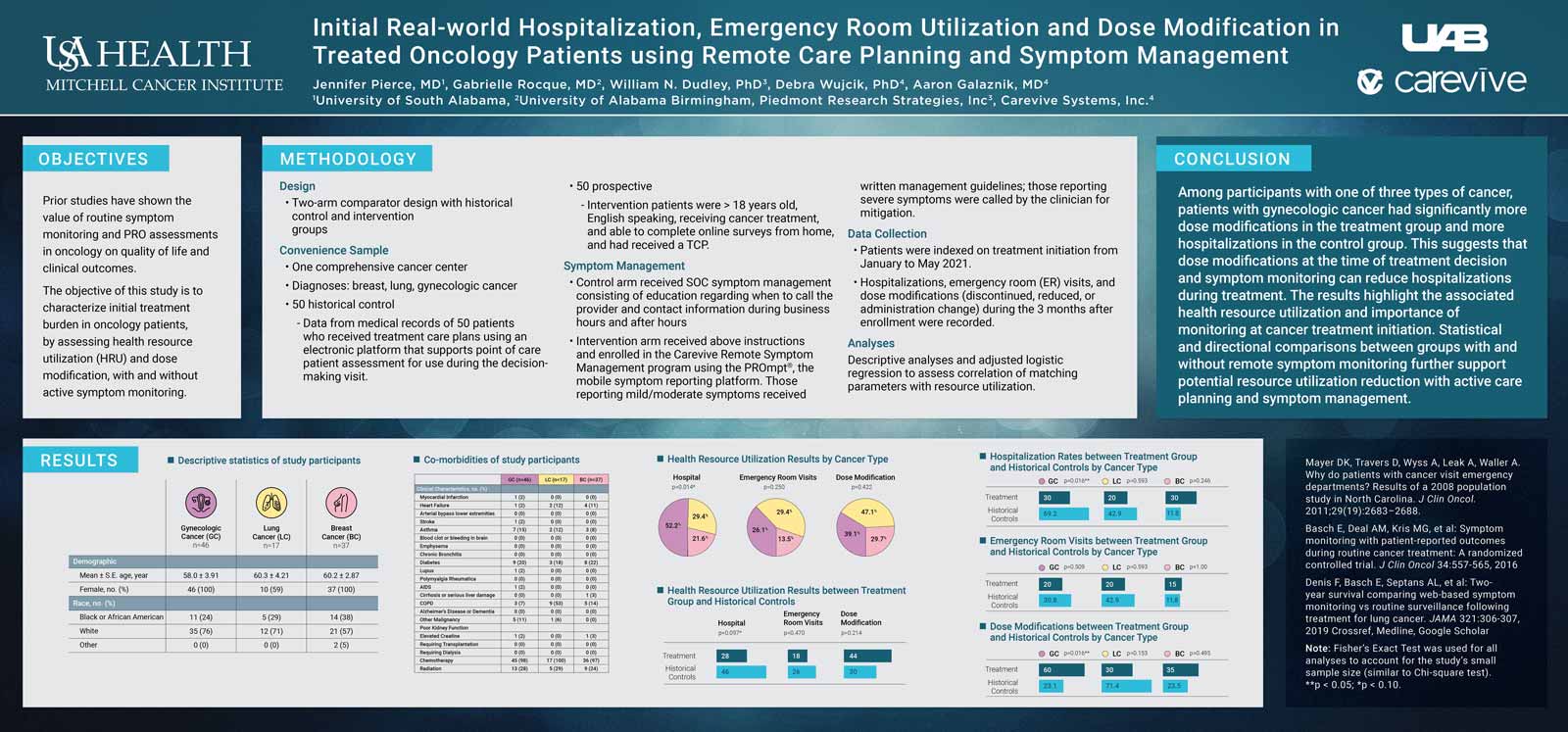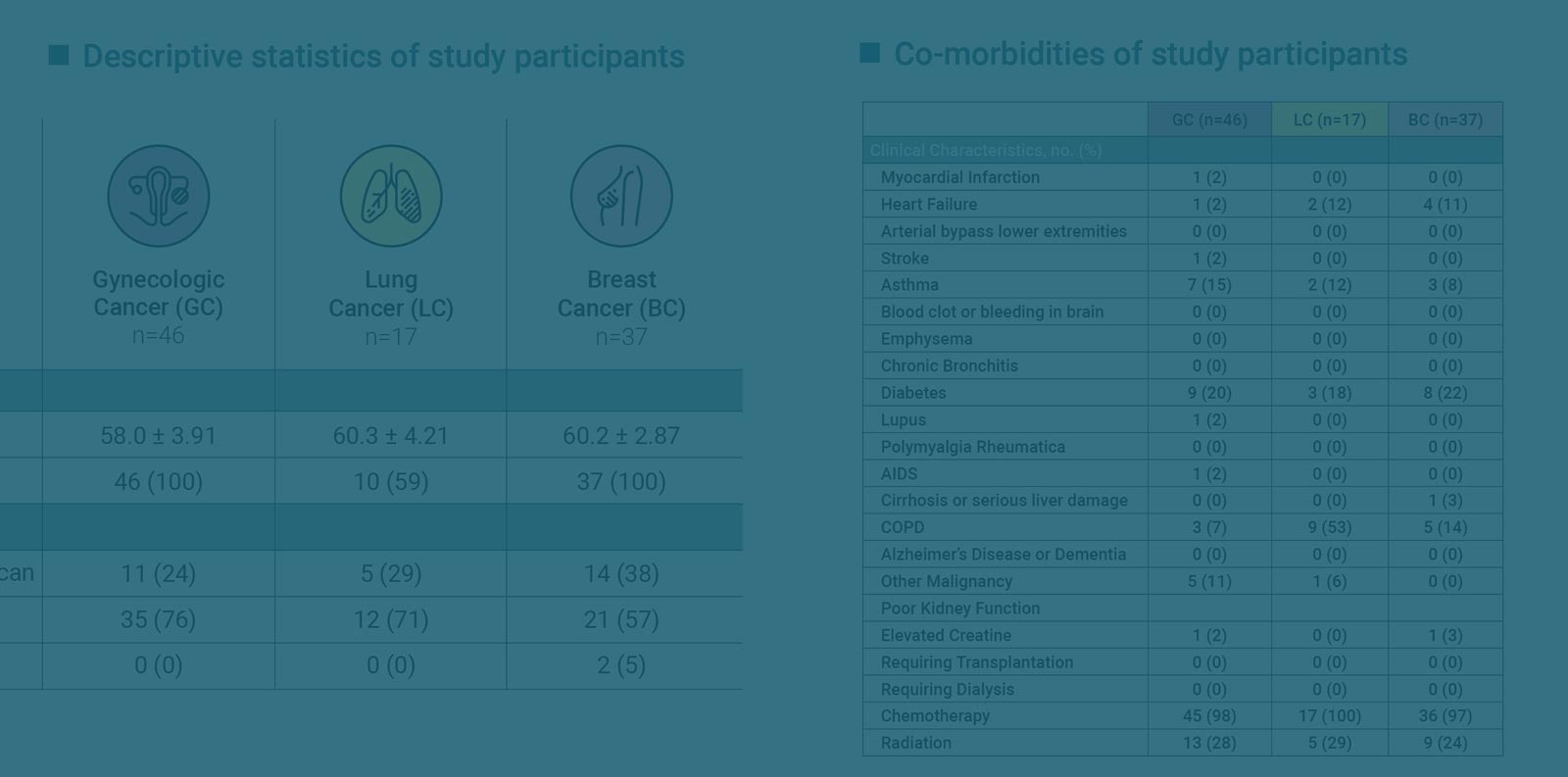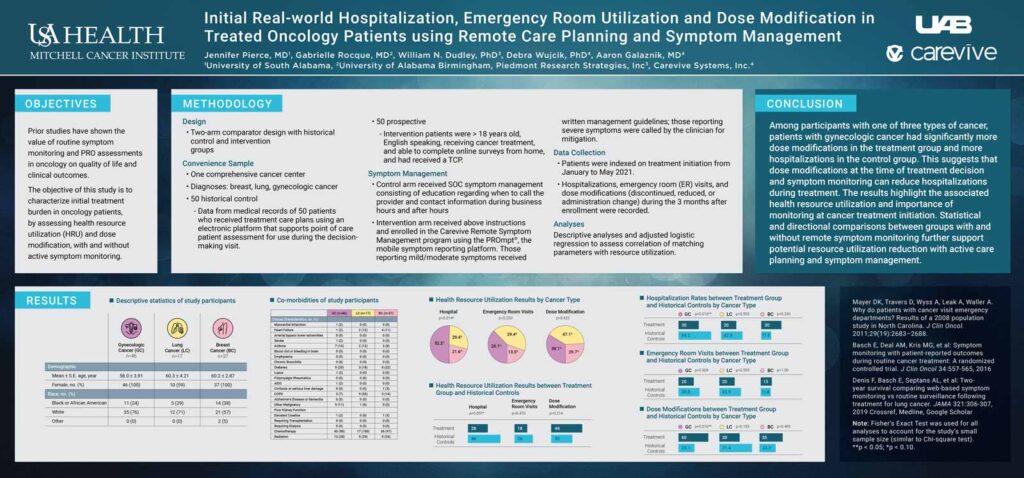
Authors: Jennifer Pierce, MD1, Gabrielle Rocque, MD2, William N. Dudley, PhD3, Debra Wujcik, PhD4, Aaron Galaznik, MD4
- University of South Alabama
- University of Alabama Birmingham
- Piedmont Research Strategies, Inc.
- Carevive Systems Inc.
Objectives
Prior studies have shown the value of routine symptom monitoring and PRO assessments in oncology on quality of life and clinical outcomes. The objective of this study is to characterize initial treatment burden in oncology patients, by assessing health resource utilization (HRU) and dose modification, with and without active symptom monitoring.
Methodology
Design
- Two-arm comparator design with historical control and intervention groups
Convenience Sample
- One comprehensive cancer center
- Diagnoses: breast, lung, gynecologic cancer
- 50 historical control
- Data from medical records of 50 patients who received treatment care plans using an electronic platform that supports point of care patient assessment for use during the decisionmaking visit.
- 50 prospective
- Intervention patients were > 18 years old, English speaking, receiving cancer treatment, and able to complete online surveys from home, and had received a TCP.
Symptom Management
- Control arm received SOC symptom management consisting of education regarding when to call the provider and contact information during business hours and after hours
- Intervention arm received above instructions and enrolled in the Carevive Remote Symptom Management program using the PROmpt®, the mobile symptom reporting platform. Those reporting mild/moderate symptoms received written management guidelines; those reporting severe symptoms were called by the clinician for mitigation.
Data Collection
- Patients were indexed on treatment initiation from January to May 2021.
- Hospitalizations, emergency room (ER) visits, and dose modifications (discontinued, reduced, or administration change) during the 3 months after enrollment were recorded.
Analyses
Descriptive analyses and adjusted logistic regression to assess correlation of matching parameters with resource utilization.
Conclusion
Among participants with one of three types of cancer, patients with gynecologic cancer had significantly more dose modifications in the treatment group and more hospitalizations in the control group. This suggests that dose modifications at the time of treatment decision and symptom monitoring can reduce hospitalizations during treatment. The results highlight the associated health resource utilization and importance of monitoring at cancer treatment initiation. Statistical and directional comparisons between groups with and without remote symptom monitoring further support potential resource utilization reduction with active care planning and symptom management.




